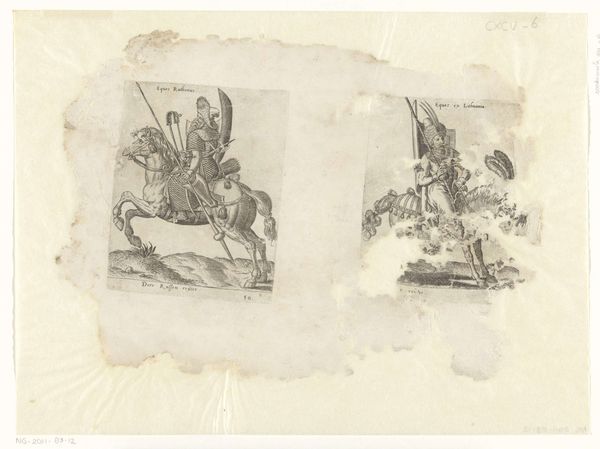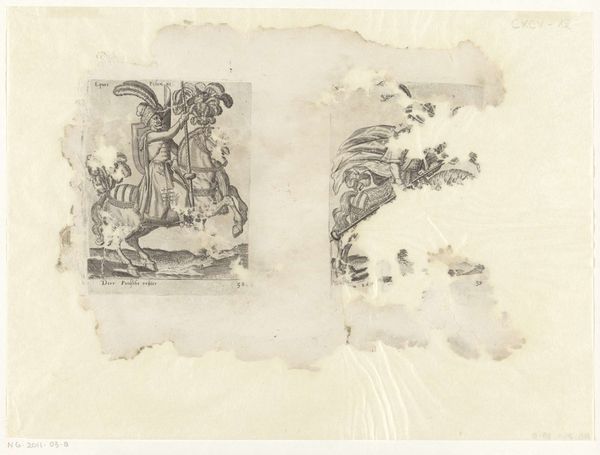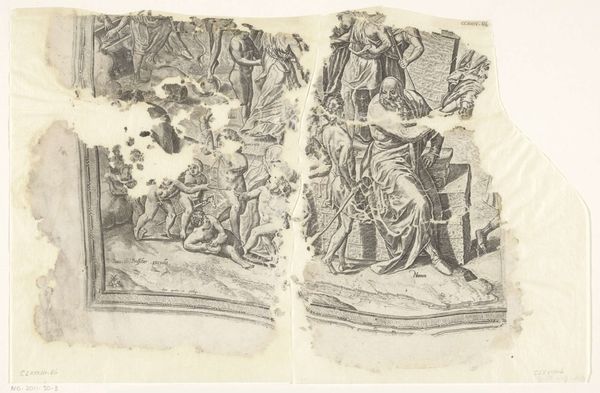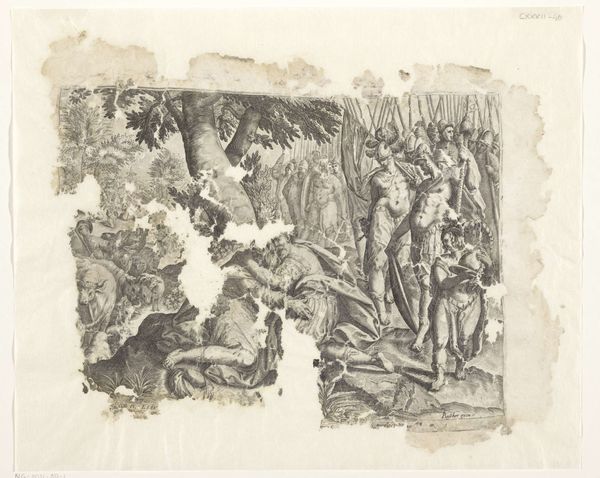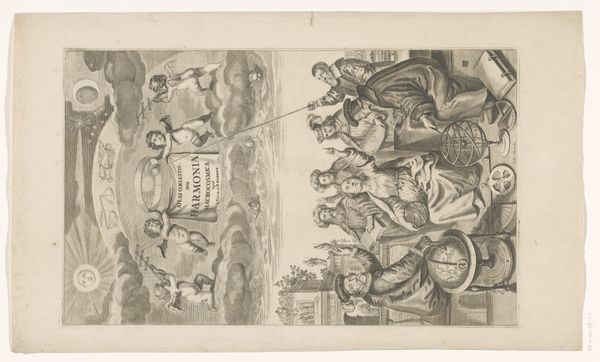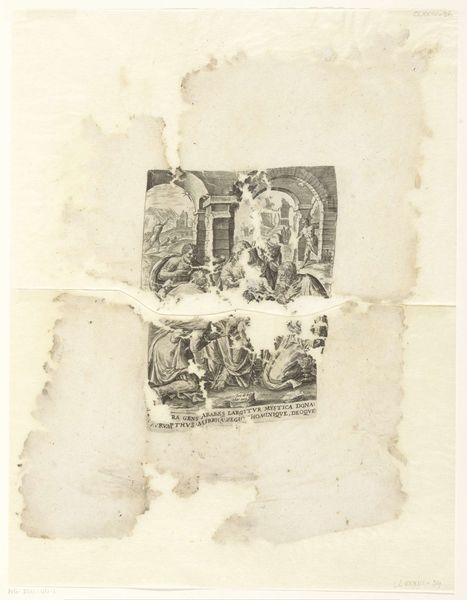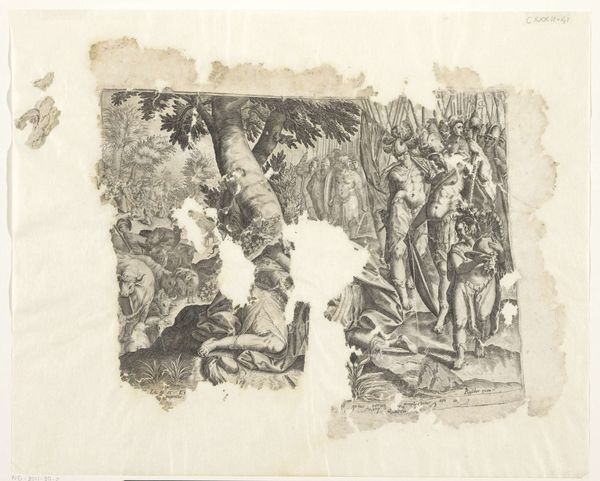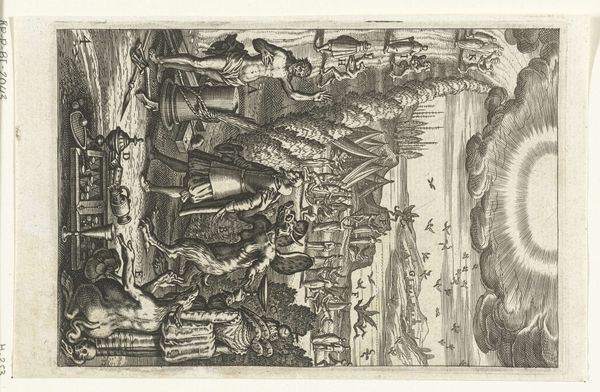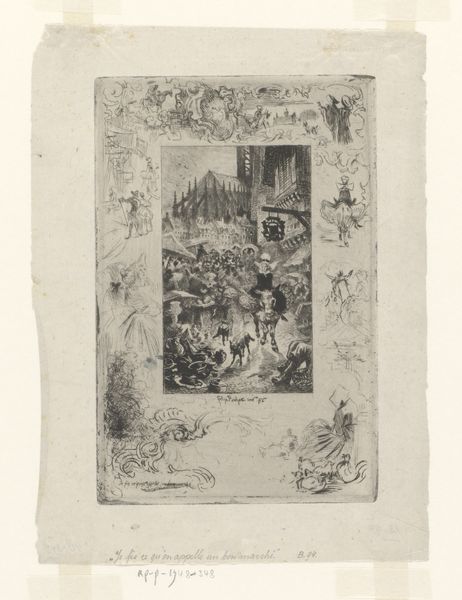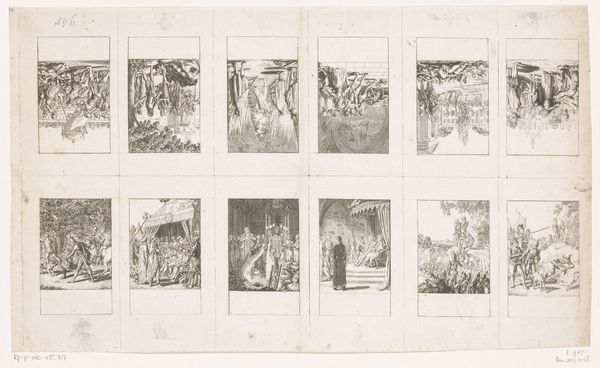
Rechterbovenhoek van een prent van het tafereel van Cebes 1561 - 1596
0:00
0:00
drawing, print, ink, engraving
#
drawing
# print
#
pen sketch
#
old engraving style
#
11_renaissance
#
ink
#
pen work
#
engraving
Dimensions: height 283 mm, width 373 mm
Copyright: Rijks Museum: Open Domain
Editor: Here we have a fragmented engraving by Philips Galle, made between 1561 and 1596. It's called "Rechterbovenhoek van een prent van het tafereel van Cebes"—that's "Upper Right Corner of a Print of the Scene of Cebes." The material detail seems so fine despite its damaged condition; what do you notice about the artwork's construction and composition? Curator: I am immediately drawn to the clear separation of space and the precision of line that defines the figures and architecture. Notice how the composition is segmented; it has a very deliberate structure, almost architectural in its organization of forms. The text, presented almost as an independent object, is striking. Editor: So, the text is not merely an accompaniment? Curator: Precisely. Consider its placement: parallel to and balanced against the pictorial field. It commands its own visual space. Galle, through these formal arrangements, prompts us to contemplate text and image as equivalent vehicles of meaning. The line quality in the rendering of the figures contributes to the effect, wouldn't you say? Editor: Absolutely. The hatching and cross-hatching create such tonal variation despite the limited color palette. I see it too in the figures struggling to ascend a sort of staircase to enlightenment perhaps, and those being received in a structure at the very top. It gives an almost dream-like quality despite the strict line work. What about the paper damage? Curator: The damage creates negative space which punctuates a dynamic interplay. While some see incompleteness, I view a work that challenges completion of our interpretation. These interruptions emphasize the intentional structure while pushing the work towards an innovative plane. It challenges traditional perspectives. Editor: I see that now. Thank you; I hadn't considered how the fragmentation actually enriches the composition.
Comments
No comments
Be the first to comment and join the conversation on the ultimate creative platform.

